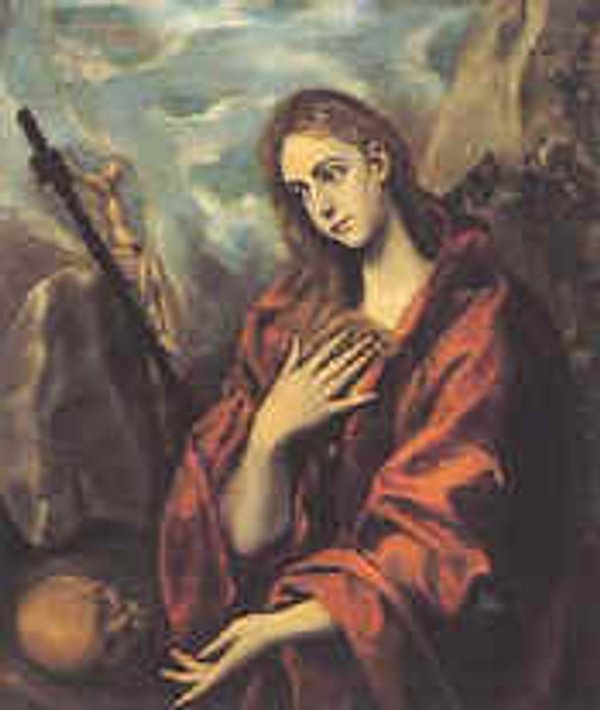● What is known as the “Gospel according to Mary (Magdalene)” is a Gnostic document, originally written in Greek, found in Oxyrhynchus ( in northern Egypt) as two fragmented texts:
– a papyrus from the 3rd century (P.Ryl. III 463 y P.Oxy. L 3525),
– and another fragment translated to Coptic [*] from the 5th century (Papyrus Berolinensis 8502). Both were published between the years 1938 and 1983;
– but the original text was very likely written in the 2nd century.
► Mary, probably Mary Magdalene – although she is always referred to only as Mary – is seen as a source of “secret revelation”, since she seems to maintain a close relationship with the Lord.
● In the fragmented text available to date, there are details on an encounter in which the disciples ask the risen Christ questions and he responds.
► Christ then sends them to preach the Good News to the gentiles, and he leaves. The disciples are left sad, without confidence to fulfil their mission. Mary encourages them to carry on with what they have been asked to do.
► Peter asks Mary to communicate to the disciples the words they have not heard from Jesus, since they knew that Jesus “loved her more than the rest of the women”. Mary talks about one of her visions, full of Gnostic connotations. In the context of a world which is disintegrating, Mary explains the difficulties the soul has to overcome to reveal its true spiritual nature in ascending to its eternal resting place.
► When she finishes relating her vision, Andrew and Peter do not believe her. Peter doubts the Lord preferred her to the other disciples, and Mary starts crying. Levi defends her (“You, Peter, always been hot tempered”) and blames Peter for attacking Mary.
► Then Levi encourages the disciples to accept that the Lord preferred Mary to themselves, and invites them to go and preach the Gospel. So they finally do.
● This is all the testimony left on the fragmented texts of this gospel. Not much, certainly. Some authors wanted to see in the Apostles’ opposition to Mary (in some way also present in the gospels according to Thomas, Pistis Sophia and in the Greek gospel according to the Egyptians) a reflection of the existing confrontations within the Church in the 2nd century. That would indicate that the official Church would be opposed to the esoteric revelations and leadership by a woman.
● Considering the Gnostic nature of these texts, it is more plausible to believe that these “gospels” do not represent the true circumstances in the Church, but do reflect particular conflicts and antagonisms towards the Church. We could reason that an idea proposed from a sectarian group should not be extrapolated in an attempt to understand more general circumstances of a larger reality. Just as we understand that an exception should never become the rule.
---------------------
[*] In modern English usage, the word Copt refers to Christian natives of Egypt, in particular members of the Coptic Orthodox Church. Arab historians, such as al-Maqrizi, also use the Arabic equivalent of the word to refer to pre-Islamic native Egyptians regardless of religion. Some modern Egyptian nationalists use Copt in a similarly generic sense to signify any native of Egypt.
